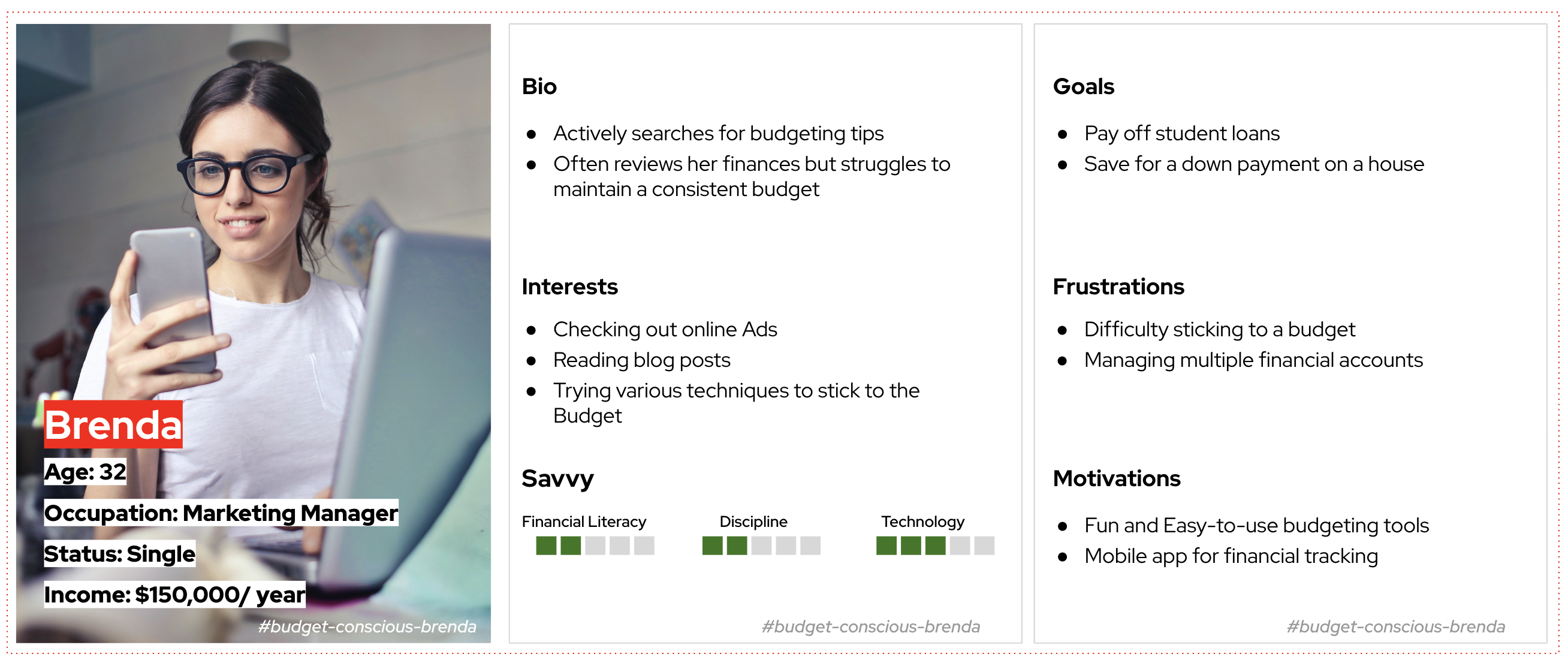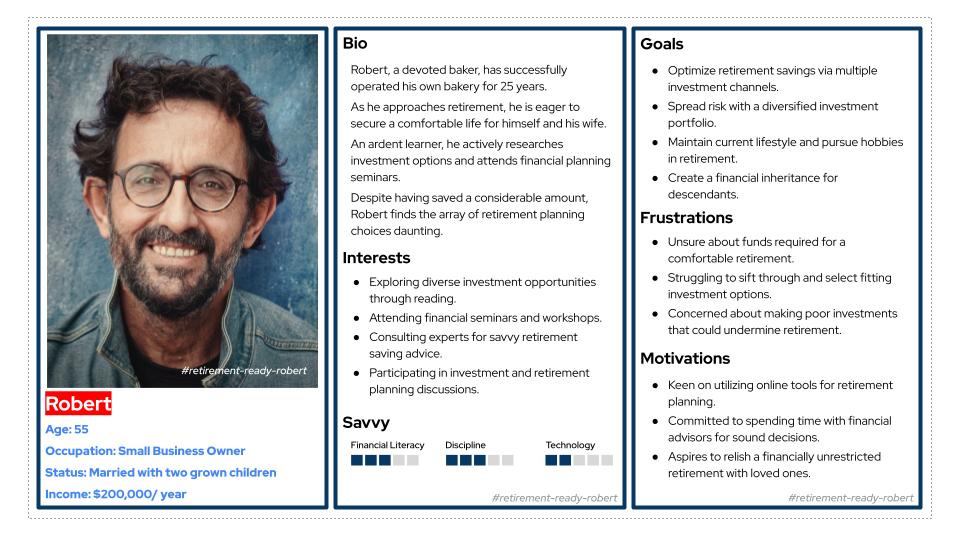ユーザーペルソナ
ターゲットユーザーの詳細なプロフィールを作成し、プロダクトの設計と開発に役立てる。
Antony Sallas
概要
ユーザーペルソナとは、徹底的なリサーチに基づいて作成された架空のキャラクターで、貴社のサービス、プロダクト、ウェブサイト、ブランドと接する可能性のある多様なユーザータイプを表すものです。
これらのペルソナは、単なる仮想のユーザーではなく、デモグラフィック、行動パターン、モチベーション、ゴールなど、オーディエンスの大きなセグメントの主要な特徴を表すように構築されています。
メリット
ユーザーペルソナは、プロダクトチームがユーザーのニーズや嗜好に基づいた意思決定を行うための指針となります。ユーザーペルソナは、機能の優先順位付け、インターフェースの設計、ターゲットユーザーの共感を得るマーケティング戦略の立案において不可欠です。
ユーザーペルソナは、チーム内でユーザーに対する共通の理解を構築し、思い込みや個人的なバイアスに基づいたデザインを避けるのに役立ちます。
実施方法
このプラクティスを進めるためのステップ:
共同でペルソナを作成するための基礎として、徹底的なリサーチから始めます。
ステップ 1. 調査の実施とユーザー特性の特定
- 調査、インタビュー、市場分析を通じて広範なリサーチを行い、ターゲットユーザーに関する詳細な情報を収集します。
- ユーザーセグメント間の主要な資質、行動、特徴的な特性を分析し、特定します。
ステップ 2. ユーザーグループの結成とステークホルダーの合意形成
- 調査結果から、潜在的なユーザーグループについて最初の仮説を立てます。
- ステークホルダーと協力して、これらのユーザー仮説とペルソナ開発の全体的な方向性について合意を得ます。
ステップ 3. 複数のペルソナを定義し、詳細化
-
以下のような、製品やシナリオに最も関連性の高いペルソナタイプを選択します:
- 目標指向型ペルソナ: 特定の目標を持った詳細な登場人物を活用し、デザイン・ソリューションの指針とする。
例:
退職準備中のロバート: 経済的安定と退職に焦点を当てています。
予算重視のブレンダ: コスト効率を重視しています。 - 役割ベースのペルソナ: 組織内のユーザーの役割を中心に、独自の課題やニーズに対応します。
例:
開発者のダレル: 典型的なソフトウェア開発者の課題を表しています。
マネージャーのマリー: マネジャーの意思決定と課題を反映します。 - 魅力的なペルソナ: 親近感のある多次元的なユーザーキャラクターを提示することで、共感を築くことを目指します。
例:
冒険好きのエヴァ: アクティブなライフスタイルのための製品の必要性を強調しています。
健康意識の高いヘンリー: ウェルネスと健康中心のデザインに注力します。
- 目標指向型ペルソナ: 特定の目標を持った詳細な登場人物を活用し、デザイン・ソリューションの指針とする。
-
他のペルソナも認めつつ、厳選したペルソナ、理想的には1つか2つの重要なペルソナに合意し、フォーカスします。
-
各ペルトなには以下を含めます:
- 写真やイラストなどの視覚的表現。
- 価値観、興味、学歴、ライフスタイル、ニーズ、態度、願望、制限、目標、行動パターンなど、背景の詳しい説明。
- ペルソナに命を吹き込み、共感を育む物語やストーリー。
ステップ 4. シナリオでペルソナを文脈化する
- それぞれのペルソナがどのようにあなたのプロダクトと接するかを示すシナリオを作成し、そのペルソナ特有の問題、ニーズ、使用例を見つけます。
- この段階では、ユーザーを理解するためにエンパシーマッピングを実践するのが効果的なアプローチです。
ステップ 5. 協力的な関与を促す
- ペルソナを検討し、受け入れ、フィードバックを提供するプロセスに、プロジェクトチーム全体を参加させます。
- 最終的なペルソナをチームメンバーに配布し、プロジェクトのワークフローと意思決定への統合を確実にします。
ステップ 6. 定期的な更新と調整
- 新しい洞察や進化する市場動向を取り入れながら、ペルソナを洗練させ、更新していく継続的なプロセスを行います。
- 新しい機能やペルソナを追加し、時間の経過とともに関連性が薄れるものは廃止する準備をしておきます。


実施例
参考
ユーザーペルソナ をチームや顧客、ステークホルダーと実施するにあたりより詳細にお知りになりたい場合は、以下のリンクを参照してください。